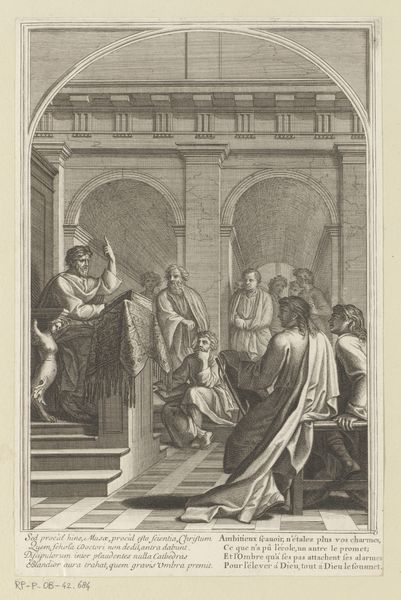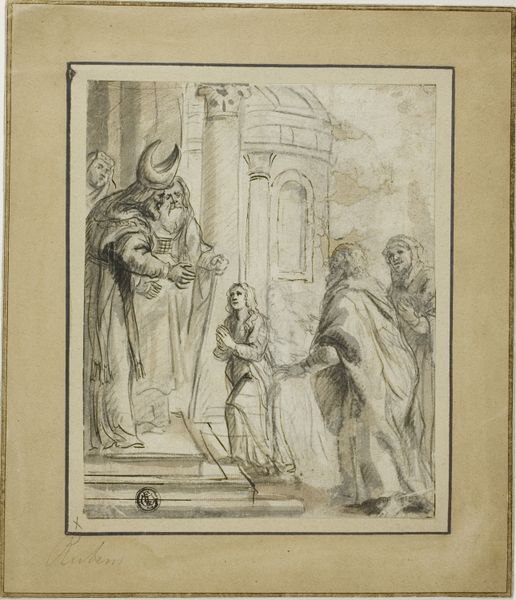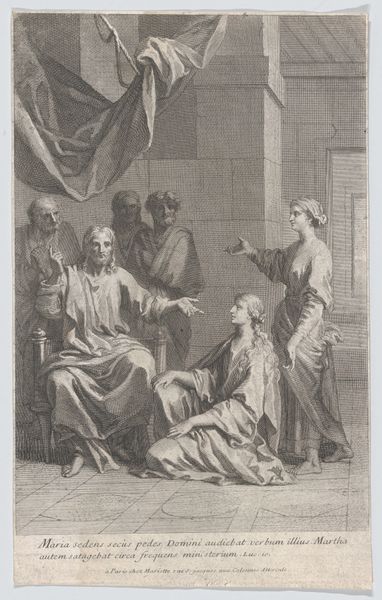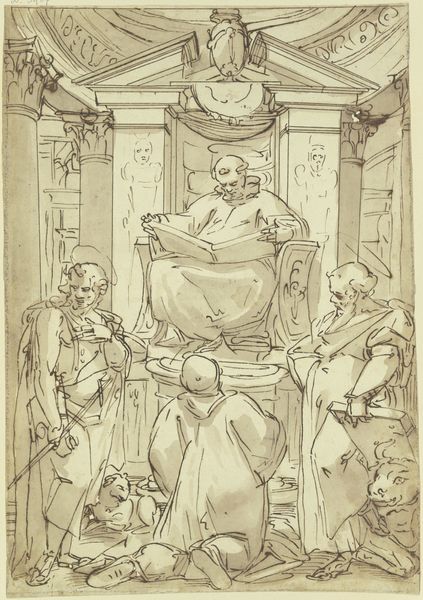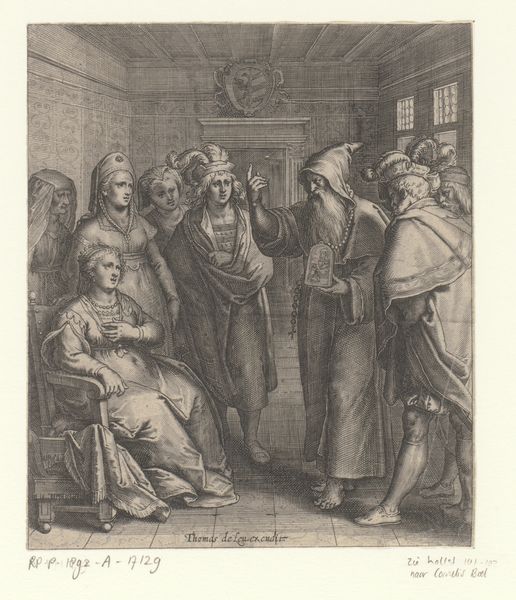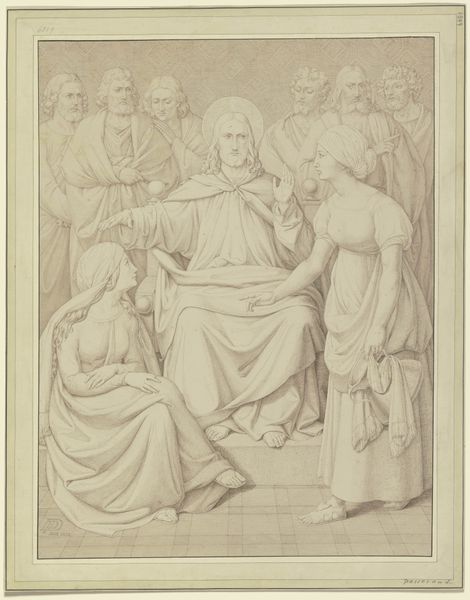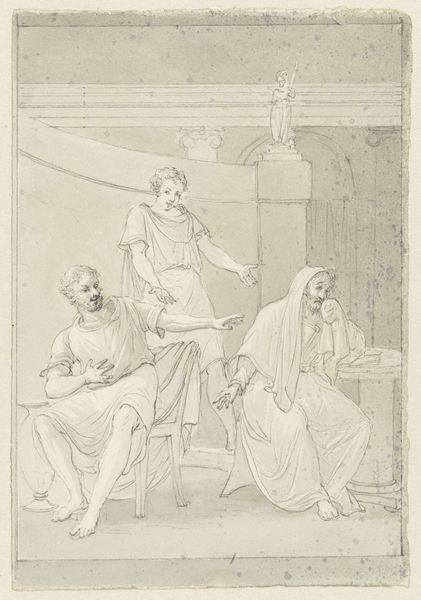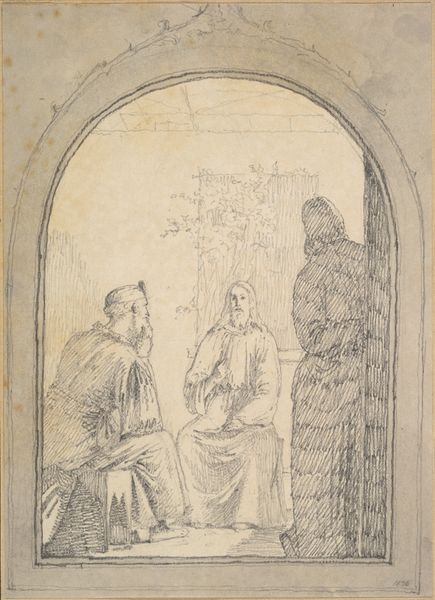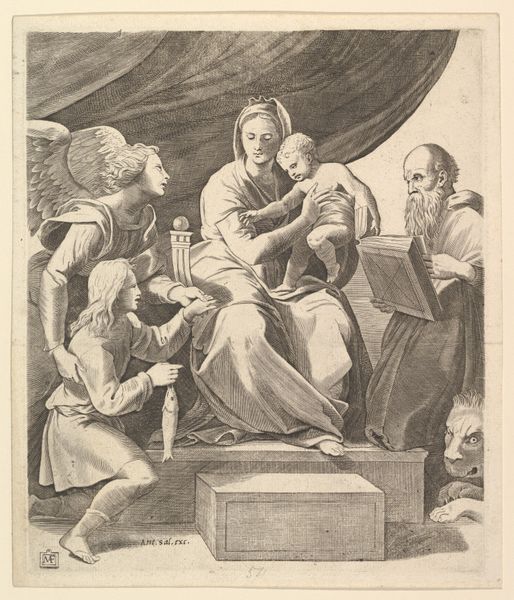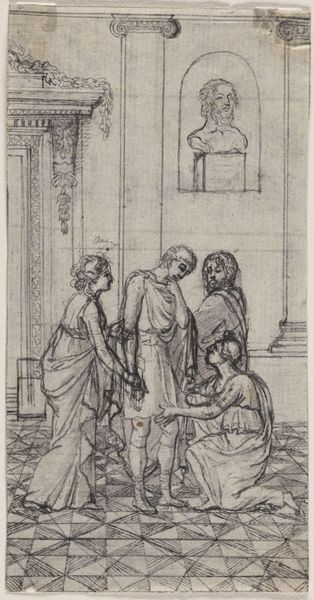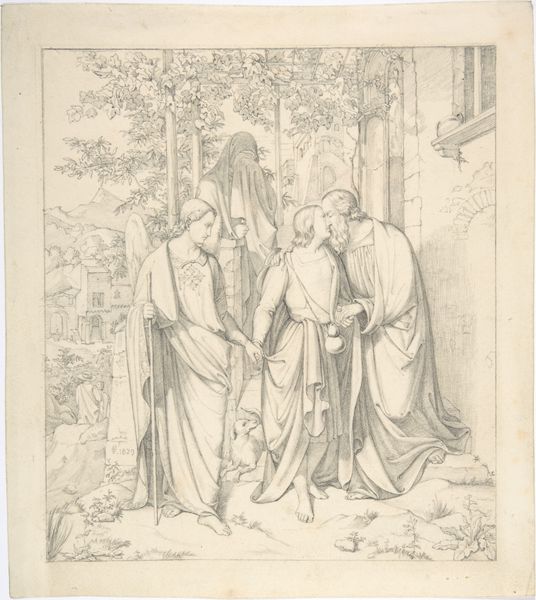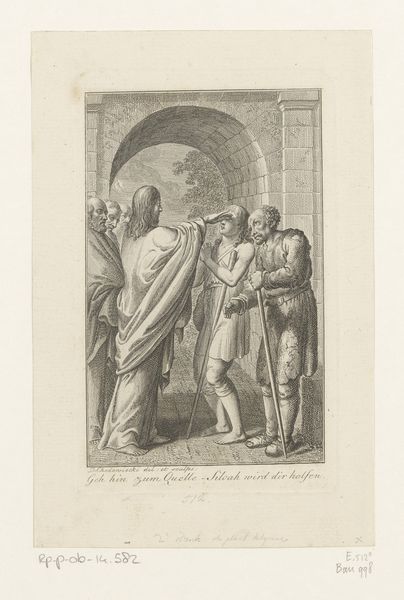
drawing, print, etching, pen
#
portrait
#
drawing
#
allegory
# print
#
etching
#
figuration
#
pen
#
history-painting
#
realism
Dimensions: 215 mm (height) x 146 mm (width) (bladmaal)
Curator: This delicate etching from 1841 is titled "Fremstillingen i templet," or "The Presentation in the Temple," by the Danish artist Edvard Lehmann. It depicts the biblical scene of Mary and Joseph bringing Jesus to the Temple in Jerusalem. Editor: It has such a quiet, almost melancholic air to it. The linework is so fine and the figures are pale, which seems to emphasize the vulnerability of the baby and the gravity of the moment. Curator: Lehmann was working within a broader context of artistic and social shifts at the time. We need to consider how the prevailing religious and political climate influenced the creation and reception of such images. What narratives were being reinforced or challenged? Editor: Absolutely. Look at the female figure of Mary. While she is the mother of God, she appears almost demure. Where is the emphasis on her power and role within Christian narratives? Curator: Precisely. The institutional history plays a huge part too; where and how was Lehmann trained, and what role did patrons and religious institutions play in commissioning artworks like this? These power dynamics would undeniably have shaped Lehmann’s artistic choices, contributing to what might feel, to our eyes, as a very traditional reading of gender roles within the holy family. Editor: Considering that the print likely circulated in homes or smaller devotional spaces, did its audience find the visual language to be empowering or did it simply echo familiar power structures in 19th-century family life? And whose gaze is centered within this depiction? Is the representation one of devotion or is it an active, gendered negotiation of power dynamics? Curator: By viewing it through a contemporary lens, we’re invited to unpack layers of social coding embedded within. We move past passive observation to active dialogue with history. Editor: A dialogue which reminds us to question representation and context, uncovering meaning beyond the purely aesthetic experience. Curator: Exactly. Understanding these layers allows for a deeper, more enriched engagement with the art.
Comments
No comments
Be the first to comment and join the conversation on the ultimate creative platform.
